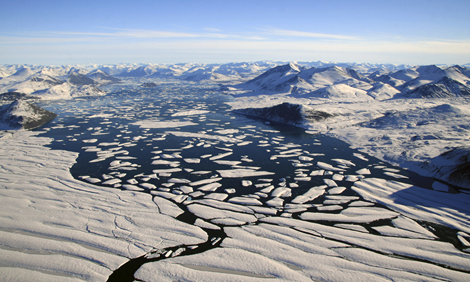

Sea ice in the Arctic region is breaking up and melting faster than normal.
Sea ice in the Arctic Ocean has been melting very quickly in recent years. Many scientists believe that climate change is causing the Arctic region to warm faster than usual. This past summer, the amount of sea ice fell to its lowest level since 2000. This means that the amount of sea ice replaced in winter is not able to keep up with the amount lost in summer. For the first time, areas of the Arctic Ocean have been completely free of ice for part of the year.
The loss of Arctic sea ice has had an economic impact on the world. New shipping routes have opened. Using a route through the ice-free Arctic makes the trip from Germany to Japan about 4,600 miles shorter. Less sea ice has also made the Arctic’s natural resources, such as oil and natural gas, easier to get to. Many countries, including the United States, Russia, and Canada, are rushing to claim parts of the Arctic.
Melting Arctic sea ice has had some negative effects on the environment. Animals that live on the sea ice, such as polar bears, are losing much of their habitat. This loss of habitat could threaten their survival. Many scientists also believe that melting Arctic sea ice may be a cause of the extremely cold winter weather in other parts of the world. This extreme winter weather is causing record snowfalls. In addition, ocean levels have risen, threatening coastal wetlands and other coastal areas worldwide.
Image credit: ©REUTERS/Denis Sarrazin/Center for Northern Studies
Related Link
- Arctic Report Card
Learn more about the changes that are happening in the Arctic region.


























